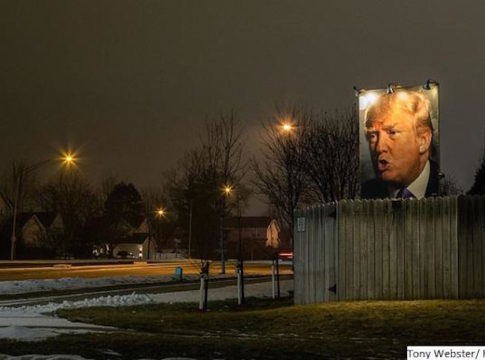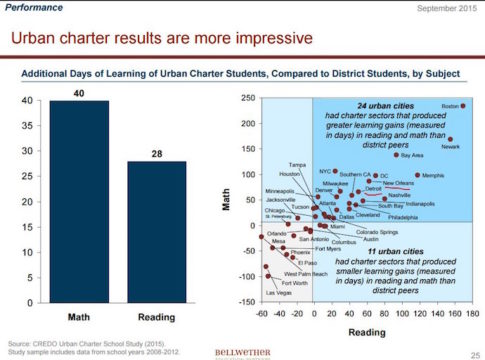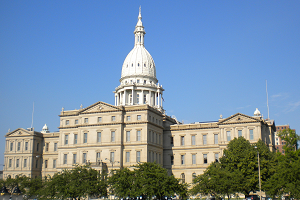In case you haven’t seen it, Education Next last month released results from its 2016 survey of parents with children in charter, district and private schools and took a deep dive into the results in an article by Samuel Barrows, Paul Peterson and Marty West. There’s also a companion piece in which Albert Cheng and Paul Peterson look at data from the National Center for Education Statistics’ Parent and Family Involvement in Education Survey.
 We think this work out of Harvard is an excellent look at the differences between the schooling sectors. However, we would be remiss if we didn’t point out that the universe of private school parents is varied. The conversation on parental satisfaction must also include those parents whose children participate in private school choice programs using mechanisms such as vouchers, tax-credit scholarships and education savings accounts.
We think this work out of Harvard is an excellent look at the differences between the schooling sectors. However, we would be remiss if we didn’t point out that the universe of private school parents is varied. The conversation on parental satisfaction must also include those parents whose children participate in private school choice programs using mechanisms such as vouchers, tax-credit scholarships and education savings accounts.
As buzz grows louder regarding President-elect Donald Trump’s future education plans—and with several states likely to consider private educational choice bills in the upcoming legislative session—it’s important for the public to understand what the key benefactors of such programs think about their schools. So, we break down the existing literature on parental satisfaction in three states with large or long-established private educational choice programs. Although the following evidence lacks local comparison groups, it is consistent with earlier studies from Cleveland, Dayton, Milwaukee, New York City, and Washington, D.C. that were able to make those comparisons.
Georgia
EdChoice (formerly the Friedman Foundation for Educational Choice) has reports that gauge parental satisfaction in educational choice programs in three states. Jim Kelly and Ben Scafidi show in their report More Than Scores: An Analysis of Why and How Parents Choose Private Schools that 84 percent of parents with children receiving a tax-credit scholarship from Georgia’s largest scholarship-granting organization were very satisfied with their scholarship school, using the same scale as the USDOE survey.
Arizona
In Schooling Satisfaction: Arizona Parents’ Opinions on Using Education Savings Accounts, Jonathan Butcher and Jason Bedrick found that 71 percent of Arizona education savings account (ESA) families were very satisfied with their children’s education through Arizona’s ESA program – and this was using a seven-level Likert scale, which, in addition to the four categories for the national survey, included: satisfied, neutral, unsatisfied.
Indiana
Earlier this year we conducted our own survey of 2,056 school parents in Indiana, of which 1,185 had at least one child participating in the state’s voucher and/or tax-credit scholarship program in 2015–16. In Why Parents Choose: A Survey of Private School and School Choice Parents in Indiana, we show that within the population of private school parents, those with children participating in a school choice program were significantly more likely to say they were very satisfied when compared to non-participants. Interestingly, the same percentage of Indiana voucher and tax-credit scholarship parents said they were very satisfied as the national sample of private school parents, although our survey of Indiana parents included the neutral response category of “neither satisfied nor dissatisfied” while the national survey did not. The accompanying chart shows the level of significant differences for the Indiana parent responses and the national parent responses; significant differences were not calculated by the authors of the other EdChoice reports.

*Difference from charter school parents statistically significant at the 99% confidence level
Notes: National respondents could choose one of four response categories: very dissatisfied, somewhat dissatisfied, somewhat satisfied, very satisfied. Indiana respondents had those categories and a fifth: neither satisfied nor dissatisfied. Raw percentages are used because background characteristics were not collected in the survey of Indiana parents.
Sources: 2012 National Household Education Survey results in Albert Cheng and Paul E. Peterson, “How Satisfied are Parents with Their Children’s Schools? New Evidence from a U.S. Department of Education Survey,” Education Next 17, no. 2 (Spring 2017), https://www.educationnext.org/how-satisfied-are-parents-with-childrens-schools-us-dept-ed-survey; Andrew D. Catt and Evan Rhinesmith, Why Parents Choose: A Survey of Private School and School Choice Parents in Indiana (Indianapolis: Friedman Foundation for Educational Choice, 2016), https://www.edchoice.org/research/why-parents-choose.
While there is a plethora of studies that have looked at the empirical evidence on school choice, parental satisfaction surveys are arguably just as important. After all, as Paul Peterson himself wrote nearly two decades ago in summary of his research of school choice programs in multiple cities, “If the only thing that counts is consumer satisfaction, school choice is a clear winner.”[1] And the ever-growing body of evidence still agrees.
—Drew Catt and Evan Rhinesmith
Drew Catt is Director of State Research and Policy Analysis at EdChoice. Evan Rhinesmith is a Ph.D. candidate and Doctoral Academy Fellow in the University of Arkansas’s Department of Education Reform.
Notes:
[1] Paul E. Peterson, “School Choice: A Report Card,” in Learning from School Choice, ed. Peterson and Bryan C. Hassel (Washington, DC: Brookings Institution, 1998), p. 18, http://www.brookings.edu/research/books/1998/schchoic.





